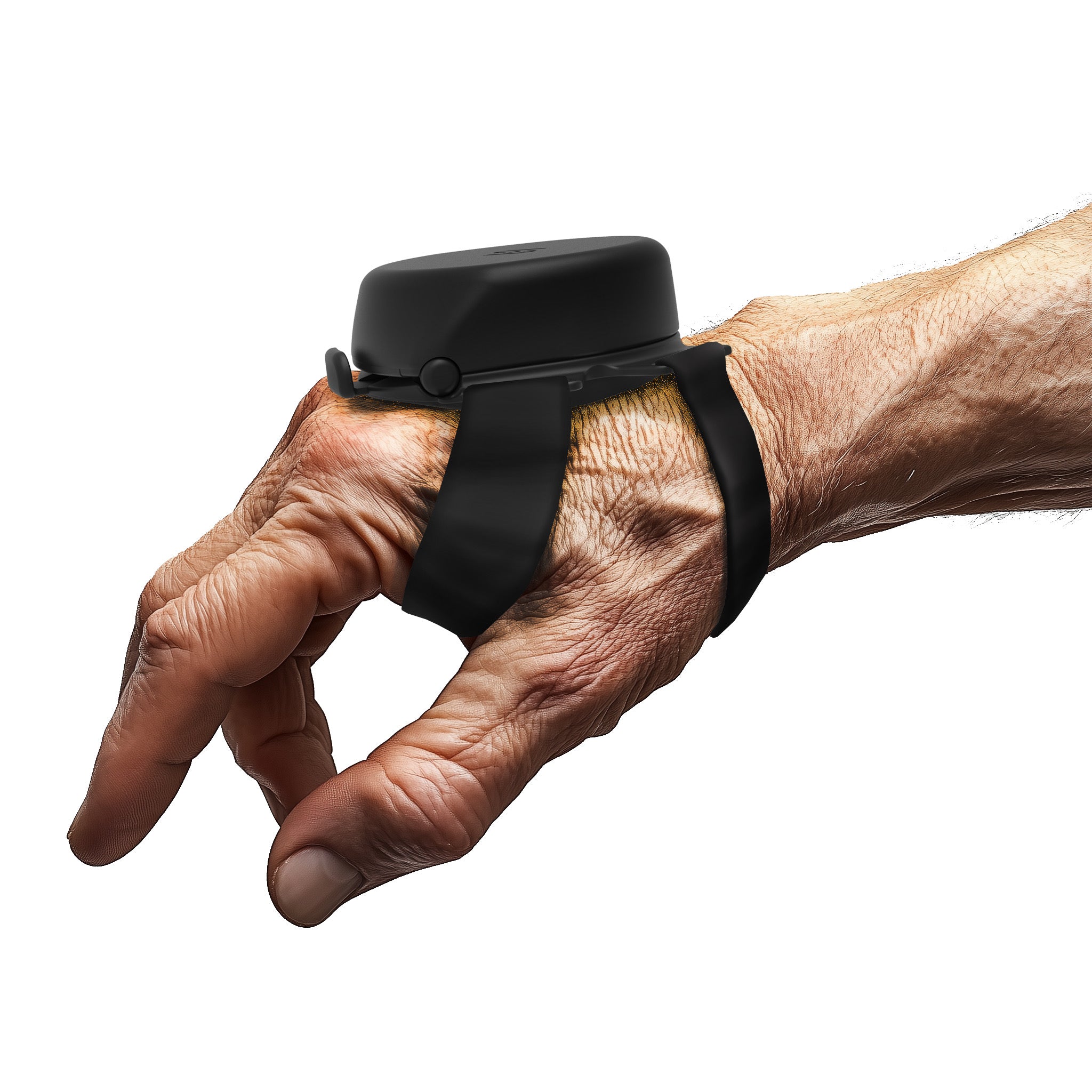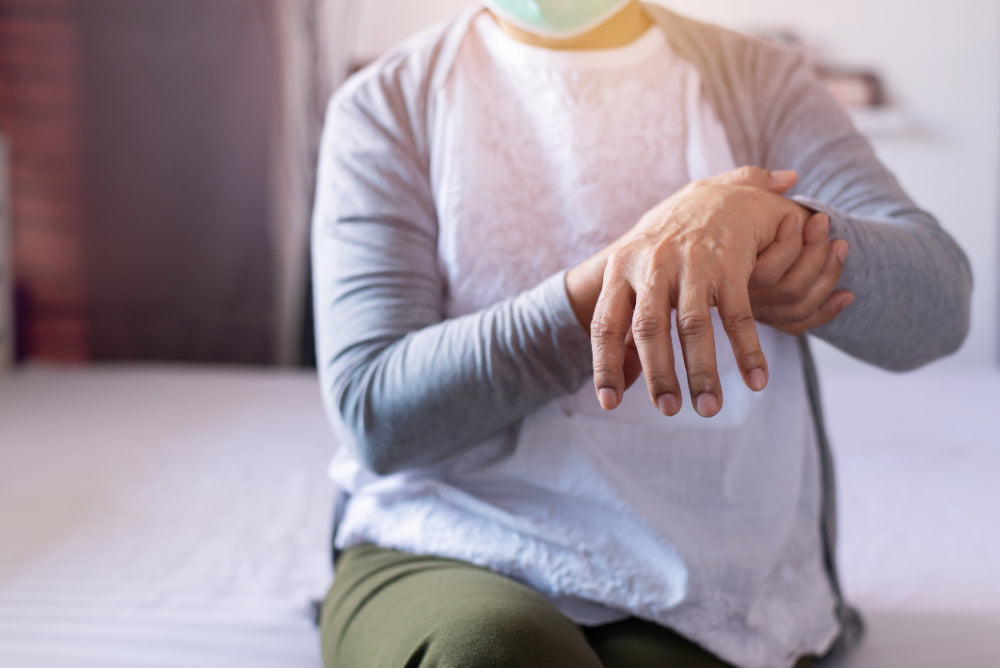In a world that moves at breakneck speed, stress has become a constant companion for many. But when stress manifests physically, it can lead to anxiety tremors—a condition where the body reacts to psychological stress with physical shaking, particularly in the hands. This blog explores the connection between stress and hand tremors, the role of assistive devices, and therapeutic approaches to managing this condition.
The Physiology of Anxiety Tremors
Anxiety tremors occur when the body's fight-or-flight response is activated. Adrenaline floods the system, preparing the body to either confront or escape a perceived threat. This response can cause shaking or trembling, often felt in the hands. While this is a normal reaction to stress, for some, these tremors can be more pronounced and disruptive, signaling an underlying condition that may require attention.
Hand Tremor Devices: Aiding Those with Anxiety-Induced Shakes
For individuals whose daily life is affected by anxiety tremors, hand tremor devices can offer much-needed relief. These specialized devices are designed to counteract the involuntary muscle movements that cause shaking. From gloves fitted with stabilizing technology to wristbands that provide gentle, corrective feedback, these devices can help individuals regain control over their hand movements.
Adaptive Devices for Essential Tremor: Beyond Anxiety
While anxiety can cause temporary tremors, essential tremor is a neurological condition that results in chronic shaking. Adaptive devices for essential tremor are engineered to address these more persistent and involuntary movements. These devices often employ sophisticated technology to provide stability and support for tasks that require fine motor skills, such as writing or eating.
Occupational Therapy: A Holistic Approach to Managing Tremors
Occupational therapy is a beacon of hope for individuals grappling with hand tremors. It's not just about managing symptoms—it's about reclaiming the ability to perform daily activities with confidence and independence. Occupational therapists employ a holistic strategy, tailoring exercises and introducing adaptive tools to enhance hand-eye coordination, strength, and dexterity. This comprehensive approach ensures that each individual can navigate their daily routines with greater ease, transforming challenges into achievable tasks.
Essential Tremor Assistive Devices: Enhancing Quality of Life
For those living with essential tremor, assistive devices are transformative, serving as a bridge to independence. These devices are meticulously designed to cater to the unique needs of the user, enabling them to undertake routine tasks that would otherwise be daunting. By incorporating these tools into their daily lives, individuals with essential tremor can experience a significant improvement in their quality of life, fostering a sense of autonomy and empowerment.
Recognizing Anxiety Tremors: Signs and Symptoms
Anxiety tremors often herald the onset of stress and anxiety. It's vital to recognize these involuntary responses—understanding the accompanying symptoms and distinguishing them from other types of tremors. Early recognition is key to managing these physical manifestations effectively, which can greatly enhance daily functioning and overall well-being.
The Role of Technology in Treating Hand Tremors
The landscape of medical technology is ever-evolving, offering groundbreaking devices that address hand tremors with innovative solutions. From wearable technology to smart home gadgets, this section will delve into how these advancements are providing relief and hope to those affected by hand tremors, showcasing the effectiveness and life-changing potential of these technological marvels.
Integrating Adaptive Devices into Everyday Life
Adaptive devices are not just aids; they are the keys to transforming daily challenges into simple tasks for individuals with essential tremor. This section offers practical guidance on incorporating these devices into everyday routines, with real-world examples demonstrating how they can enhance functionality and independence. It also emphasizes the importance of selecting the right device and customizing it to meet personal needs.
Occupational Therapy: A Partner in Tremor Management
Occupational therapy is a collaborative journey towards managing tremors. This section will illuminate how occupational therapists partner with individuals to impart skills and strategies essential for managing their condition. It will provide insights into the therapy process, the importance of goal setting, and how therapists assist patients in maximizing the benefits of essential tremor assistive devices.
The Psychological Impact of Living with Hand Tremors
The journey with hand tremors is not solely physical; it's an emotional and psychological voyage as well. This section will address the mental health concerns that accompany tremors, such as embarrassment and anxiety in social settings. It will offer resources for psychological support and coping strategies, underscoring the integral role of mental health in the holistic management of tremors.
The Science Behind Stress-Induced Tremors
Delving into the body's response to stress, this section will explore the biological mechanisms behind stress-induced tremors. It will elucidate the nervous system's reaction to stressors, the influence of neurotransmitters and hormones like adrenaline, and the resultant physical symptoms, such as shaking. Understanding these processes is crucial for individuals seeking to manage their condition more effectively.
Lifestyle Modifications for Tremor Reduction
Beyond devices and therapy, lifestyle changes can play a pivotal role in managing hand tremors. This section will suggest holistic strategies, including stress management techniques like mindfulness and yoga, dietary adjustments, and the role of regular physical activity in symptom management. These modifications aim to minimize tremor episodes and enhance overall health and well-being.
FAQ
1. What exactly are anxiety tremors and how do they differ from other tremors?
Anxiety tremors are involuntary shakes that can occur during periods of heightened stress or anxiety. Unlike tremors associated with neurological conditions like essential tremor or Parkinson's disease, anxiety tremors are typically transient and directly related to stress levels.
2. Can hand tremor devices really improve daily life for those with anxiety-induced shaking?
Yes, hand tremor devices are designed to stabilize the hands and can be very effective for those with anxiety tremors. They work by dampening the involuntary muscle contractions, thereby allowing for smoother movement and improved ability to perform daily tasks.
3. Are there specific adaptive devices for essential tremor that can help with computer work or other fine motor activities?
Absolutely. There are a variety of adaptive devices for essential tremor tailored to assist with fine motor activities. These include weighted pens, stabilizing mouse devices, and keyboard pads that can help individuals maintain productivity and precision during computer work.
4. What does occupational therapy treatment for hand tremors involve?
Occupational therapy for hand tremors typically involves exercises and activities designed to improve hand-eye coordination, strengthen muscles, and increase dexterity. Therapists may also recommend and train individuals in the use of essential tremor assistive devices to facilitate daily tasks.
5. How do I know if I need an essential tremor assistive device, and where can I find them?
If tremors are affecting your ability to perform daily activities, it may be time to consider an assistive device. These devices are available through medical supply stores, online retailers, and sometimes directly through healthcare providers. It's best to consult with a healthcare professional or occupational therapist to determine the most suitable device for your needs.
Conclusion
Understanding the link between stress and hand tremors is the first step toward managing this condition. Whether the tremors are a temporary response to anxiety or part of a chronic condition like essential tremor, there are numerous options available to help. From hand tremor devices that provide immediate physical support to occupational therapy that offers long-term strategies, individuals have a range of resources at their disposal. By leveraging these tools and therapies, those affected by tremors can navigate their condition with greater assurance and less disruption to their daily lives.



